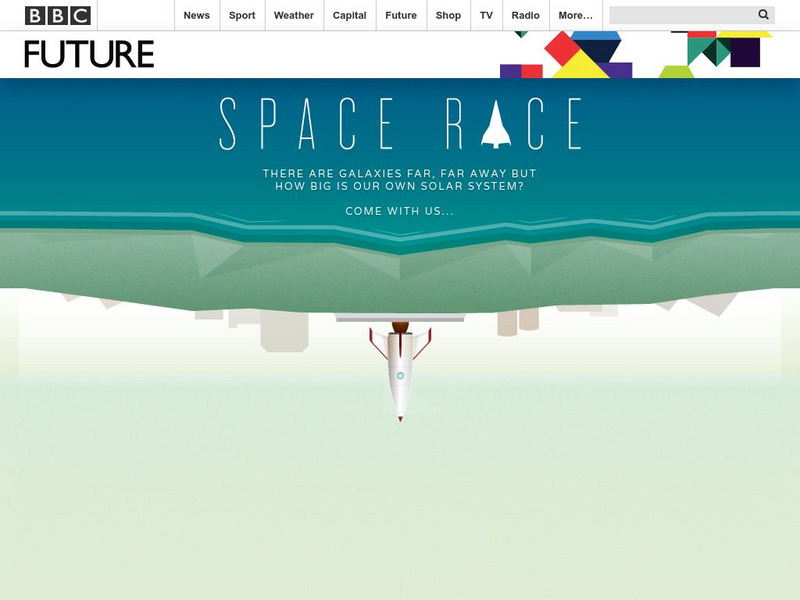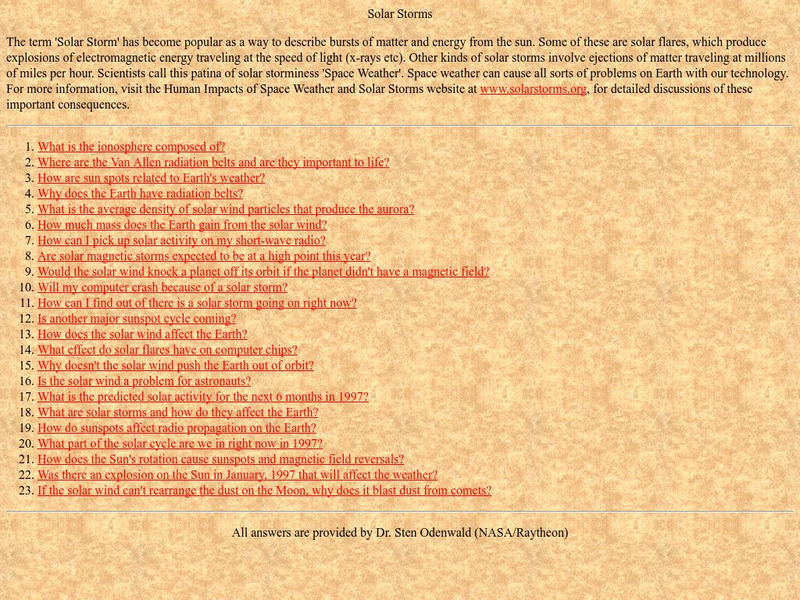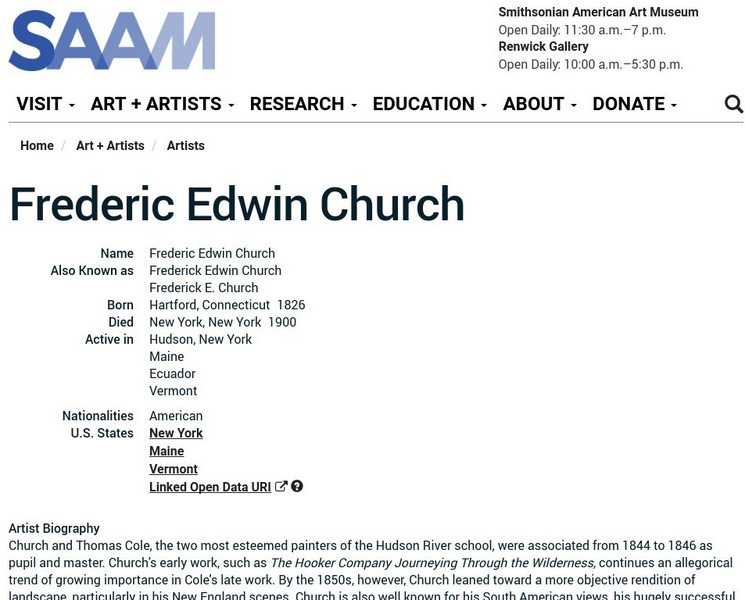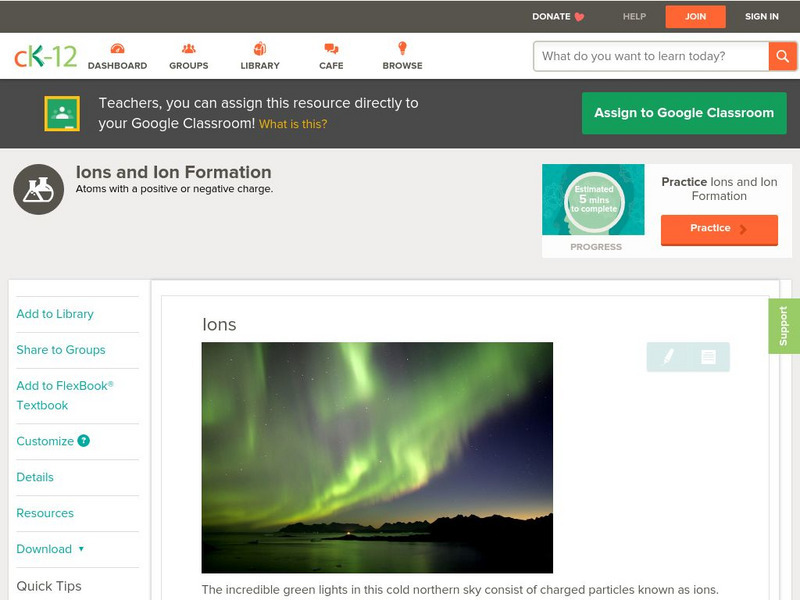Hi, what do you want to do?
NASA
Nasa Space Place: What Is an Aurora?
Learn about auroras and their causes, and see some auroras caught on camera.
TED Talks
Ted: Ted Ed: What Is an Aurora?
Why do we see those stunning lights in the northern- and southernmost portions of the night sky? Michael Molina explains every step of the dazzling phenomenon of the Aurora Borealis and Aurora Australis. [4:10]
National High Magnetic Field Laboratory
Magnet Academy: Anders Celsius
Anders Celsius is most familiar as the inventor of the temperature scale that bears his name. The Swedish astronomer, however, also is notable as the first person to make a connection between the radiant atmospheric phenomenon known as...
Other
Twan: Messengers From the Sun
An incredible photograph of the aurora borealis with some fascinating information as to its origins are presented in this site.
Exploratorium
Exploratorium: Auroras: Paintings in the Sky
Six different questions are addressed by this resource. The questions address everything you might need to know from what they look like to what causes them.
University of Wisconsin
The Aurora Page Photographs by Jan Curtis
Nine pages of images, four to six to a page, showcase the magnificence of the Northern Lights.
Library of Congress
Loc: Everyday Mysteries: What Are the Northern Lights?
What are the Northern Lights? This brief yet fact filled article explains all the important details including origin, composition, colors and appearance. Photos and maps are included.
Famous Scientists
Famous Scientists: Kristian Birkeland
Learn about life and contributions of Kristian Birkeland.
Other
Usps: Polar Lights
You and your students are going on an expedition to learn about the polar regions. Explore the glaciers, subglacial rivers, and volcanoes. Get up close and personal with furry, flippered, and feathered friends. Learn how other people...
BBC
Bbc: Space Race
There are galaxies far, far away, but just how big is our own solar system? Scroll through this interactive to quickly observe just how much we know and have learned about our solar system.
Nine Planets
The Eight Planets: The Sun Solar Wind
This Eight Planets site briefly describes solar wind, a low density stream of charged particles emitted by the Sun. It also provides the basics on the sun's composition and additional sun links.
Other
Polar Continental Shelf Project for Kids!
Visit this resource to learn about the geography, wild life, plants and people of Polar Continental Shelf in Canada's Arctic. Students can take a quiz to see how much they have learned.
NASA
Nasa: Image Science Center: Ask the Space Scientist Earth
Site from NASA contains a collection of 91 questions pertaining to the Earth's atmosphere, magnetic field, ionosphere, rotation and origin of life.
Extreme Science
Extreme Science
Explore the science behind the "extremes" in our world. Organized into sections on earth science, the animal kingdom, technology, and space science, this site opens your eyes to giant creatures, amazing technological advances, vast...
Smithsonian Institution
Smithsonian American Art Museum: Frederic Edwin Church
As part of the Smithsonian Art Museum's database of artists, this site provides biographical information on Frederic Edwin Church in addition to an extensive listing of his works as displayed at the museum.
CK-12 Foundation
Ck 12: Physical Science: Ions
[Free Registration/Login may be required to access all resource tools.] Ions, how they form and their properties.
Other
University of Leicester: Sun
Provides a brief overview of the Sun, including a focus on solar eclipses, solar wind, and solar sailing.
Other popular searches
- Aurora Borealis Art
- Physics Aurora Borealis
- Aurora Borealis Web Quest
- Aurora Borealis Song
- Aurora Borealis Watercolor
- Aurora Borealis Graphs
- Aurora Borealis Is Art
- Aurora Borealis Poems
- Aurora Borealis Lesson Plans


















